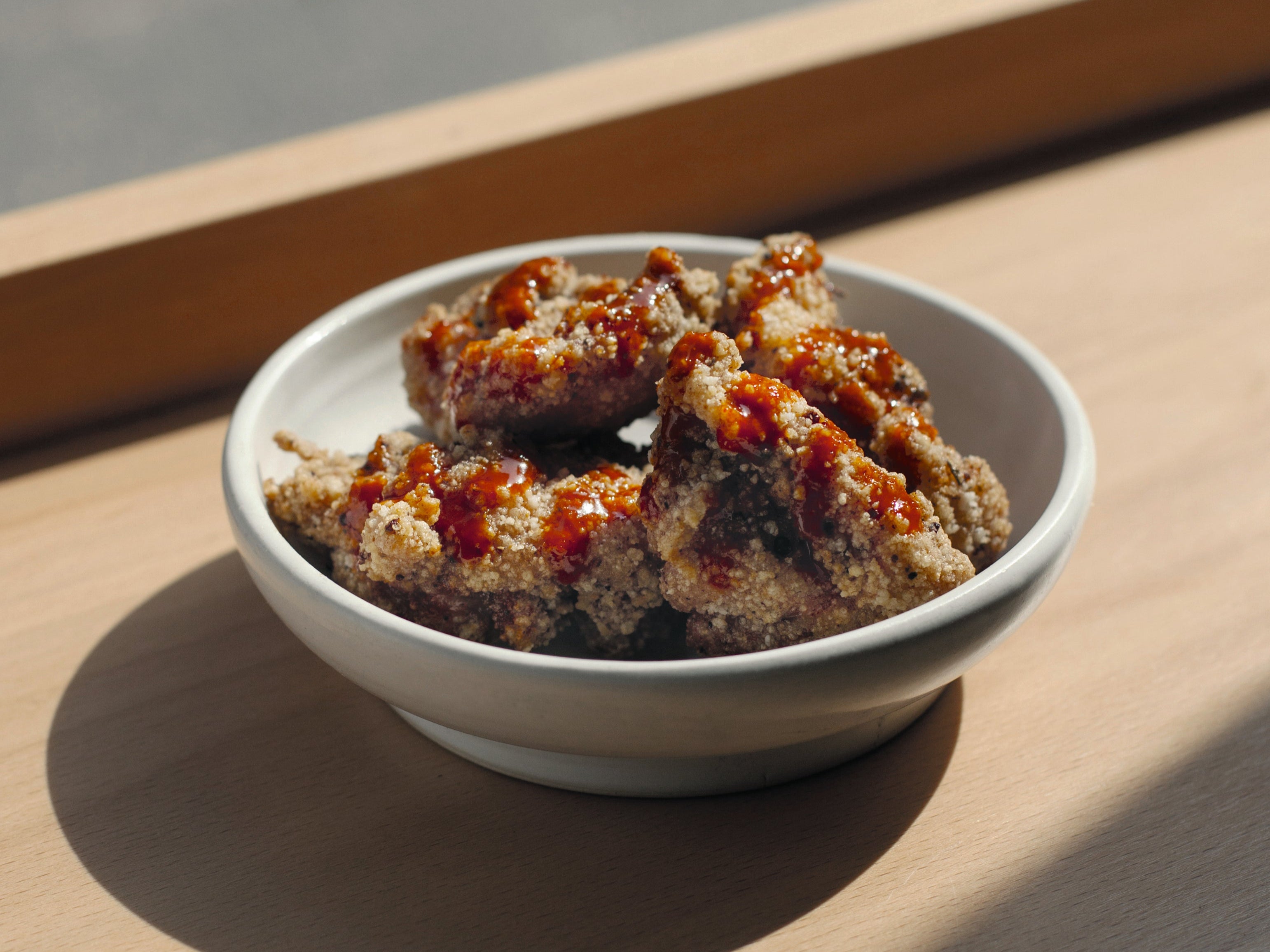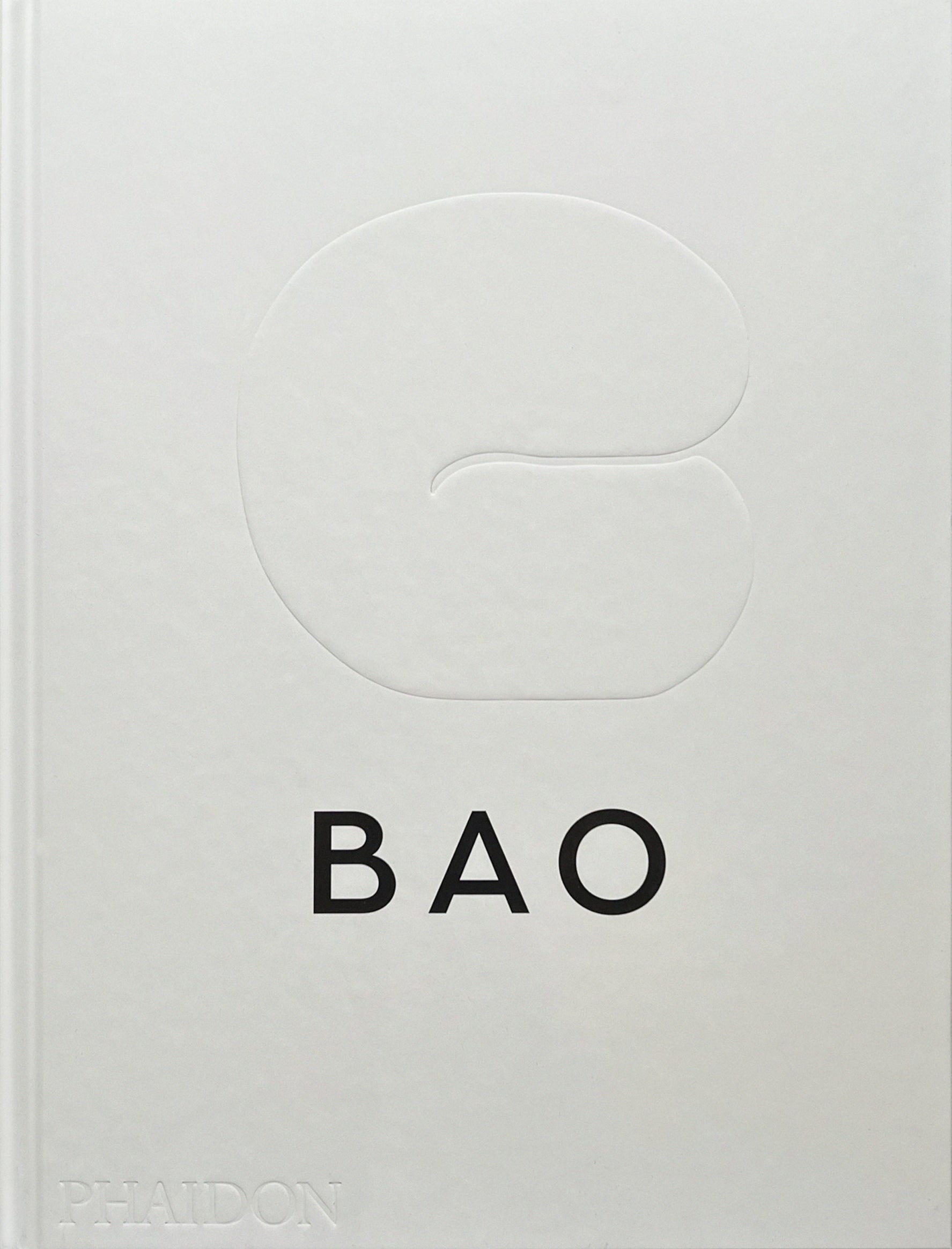This Taiwanese fried chicken recipe is a closely guarded secret
We spent years keeping our Taiwanese fried chicken a secret, even from our staff, say BAO London founders Erchen Chang, Shing Tat Chung and Wai Ting Chung. Now, we’re sharing it with the world

Taiwanese fried chicken! I have so many childhood memories of eating this with friends at night markets, and it was one of the three items we sold when we first started BAO as a market stall, along with the classic pork bao and the daikon bao.
These memories of fried chicken have now been replaced with memories and stories involving our pursuit of perfecting BAO’s fried chicken over the years. Right from the beginning we had spreadsheets full of marinade timings and frying stages that we tested to get the juiciness and crispiness we wanted. We discovered that there was a certain amount of time you could keep the flour on the meat and a specific way to coat the chicken with the flour using a flick of your palm.
This journey made us very protective of the recipe. So many people would quiz us, trying to find out the flour and the spice mix we used, especially in our market days. There weren’t many Taiwanese restaurants back then, so it wasn’t readily available information.
The lengths we went to keep the fried chicken coating a secret… we would have the flour delivered to another location or beat the staff to the delivery so we could hide it and empty the small packets into clear containers when everyone had left. The spice and marinade mix were the hardest to keep doing in secret – it was only a couple of years ago that we had that moment, looking at each other, lab coats on, rubber gloves on, masks on, on a hot summer day in an unventilated office, when we asked ourselves, “Why are we still doing this every week?” That powder in large volumes really gets up your nose!
At that, we decided we had had enough and eventually moved the process to an external producer with a signed NDA. But now, after all that secrecy, it is here for you to see.
Taiwanese fried chicken
Serves: 2-3
Ingredients:
Vegetable oil, for deep-frying
Hot Sauce (see below), to serve
For the marinated chicken:
200ml soy milk, plus extra if needed
1 clove garlic, grated
2.5cm (1in) piece of fresh ginger, peeled and grated
2 tsp cornflour (cornstarch)
1 tsp ground cumin
1 tsp five spice powder
1 tbsp soy sauce
1 tsp rice vinegar
300g skinless, boneless chicken thighs, cut into 10 equal pieces
For the spiced flour mix:
200g tapioca flour (starch)
1 tsp red Sichuan peppercorns, ground to a powder
1 tsp cayenne pepper
¼ tsp garlic powder
½ tsp five spice powder
1 tbsp salt
Method:
For the marinated chicken:
In a large non-reactive bowl, mix together all the ingredients except the chicken. Add the chicken pieces, stir to coat, cover and leave to marinate in the refrigerator overnight. If you are in a hurry, marinate for 1 hour at room temperature.
When ready to cook, run your fingers through the chicken mixture to moisten any overlapping pieces. If it requires more soy milk, add some now so all the chicken pieces are submerged in the marinade.
For the spiced flour mix:
In a bowl, mix together all the ingredients, making sure the spices are evenly distributed.
To assemble:
Toss a piece of chicken straight from the marinade into the flour mix. Roll it around lightly with your fingers to form a nugget shape. Do not flatten it or try to press more of the mix onto it. If you want more spiced flour on the chicken, roll it in the bowl of flour mix a few times and dust extra spiced flour mix on top. Make sure the piece is fully coated, then transfer to a plate or tray. Repeat the process with the remaining chicken pieces.

Heat the oil in a deep, heavy-based saucepan to 160C/325F, or until a cube of ginger sizzles and browns in 20 seconds. Very lightly shake off any excess flour mix, then – in 2 batches – carefully hold the chicken and slowly drop it away from you into the hot oil and deep-fry for 3 minutes until cooked through, lightly golden and crisp. Remove with the tongs or slotted spoon, drain on paper towels and leave to cool completely.
When cool, reheat the oil to 190C/375F and deep-fry again for 2 minutes. Place the chicken pieces in a shallow bowl and drizzle with hot sauce to serve.
Hot sauce
This hot sauce recipe used to be such a closely guarded secret that I would go into the restaurant on Sunday nights, after all the other chefs had left, to finish it. It was only recently that I stopped doing this. Now here we are, offering the recipe up to the world. We’ve come a long way. You can also buy our hot sauce from our shop.
Makes: 850ml
Ingredients:
20g garlic, chopped
165g fresh ginger, chopped into 1cm (1/2in) cubes
210ml rice vinegar
265ml light soy sauce
30g chilli powder
20g hot paprika
185ml honey
5 tsp caster (superfine) sugar
Method:
Put the garlic and ginger into a blender, then pour in the vinegar. It should be enough to cover the garlic and ginger; if not, add a little more vinegar. Blend at high speed for at least 3 minutes until completely smooth. Add the remaining ingredients and blend at high speed for 6-8 minutes or until completely smooth.
Pass the sauce through a fine-mesh sieve into a bowl - you want some of the ginger fibres to get through, but to sift out the larger, unpleasant stringy bits (this gives a good consistency to the sauce without having to thicken it with anything else). Squeeze any remaining solids through the sieve into the sauce to ensure you get all the juices and flavours from them.
The sauce can be stored in a sterilised glass jar or an airtight container at room temperature for up to 1 month, or in the refridgerator for up to 3 months.
Recipe from ‘BAO’ by Erchen Chang, Shing Tat Chung, Wai Ting Chung (published by Phaidon, £29.95).
Join our commenting forum
Join thought-provoking conversations, follow other Independent readers and see their replies
Comments
Bookmark popover
Removed from bookmarks